Some imported car models develop severe “stickiness” on their interior parts due to degradation of the surface coating.
When the car is new, these parts have a smooth, pleasant touch. However, in areas exposed to direct sunlight, this stickiness can develop as early as 5 years (at the time of the second vehicle inspection). Even in favorable conditions, it often appears by 9 years (at the fourth vehicle inspection), affecting interior parts that are frequently touched.
notice : In Japan, mandatory vehicle inspections (called “shaken”) typically occur every two years for passenger vehicles.
Attractive imported cars seem to age prematurely, you might say. This is one of the typical forms of degradation rarely seen in domestic vehicles.
This stickiness, when severe, leaves a black adhesive substance on your hands. As you touch your clothes or other interior parts with these hands, black stains unknowingly spread and soil various areas. Attempting to wipe it off with a cloth is the worst thing you can do, as fibers become entangled on the surface, creating a miserable sight and further deteriorating the surface condition.
This is truly an unmanageable degradation, and I wonder if some people have even changed their cars because of this stickiness.
↓ This Alfa Romeo Mito, despite being kept in an excellent environment, had its horn pad become completely sticky by its 4th inspection (at 9 years old).
The surface develops a strange gloss, and repeated contact leaves numerous mark-like scratches. Every time the horn is used, it makes you grimace.
The customer requested a replacement, but a new horn pad integrated with the airbag inflator is extremely expensive. Moreover, it could become sticky again quickly under poor conditions, so we decided to treat it differently.
After trying several chemicals, anhydrous ethanol seemed to offer the best handling and finish.
What you need to be careful about is that the soft material of the horn pad is vulnerable to anhydrous ethanol. Continuous wiping without moderation can damage the material. To create a glossy surface without stickiness, you first need “patience” to face the horn pad for a long time. If you stop midway, you might regret not leaving it as it was.
In my case, with my current level of proficiency, it takes about 8 hours to achieve a satisfactory surface condition. When I was inexperienced, it might have taken around 3 full days. Still, the new product price exceeded this labor cost. As half-hearted efforts lead to failure, this might not be suitable for DIY.
Next is the inside door handle of another Alfa Romeo model, the Giulietta.
This is a place you always touch when getting in and out of the car. This too makes you grimace
every time you use it.
As this is a small part and doesn’t require as much attention to surface condition as the horn pad to avoid looking out of place, I decided to strip off the stickiness at once with a strong solvent and repaint it. I carefully masked surrounding parts to prevent the solvent from affecting them.
I applied multiple layers of matte urethane paint, adjusting the texture and feel as I went along.
The quick-drying, fast-curing urethane paint can be touched within 5 minutes of application, so I applied it while checking the feel by touch.
It turned out very nicely.
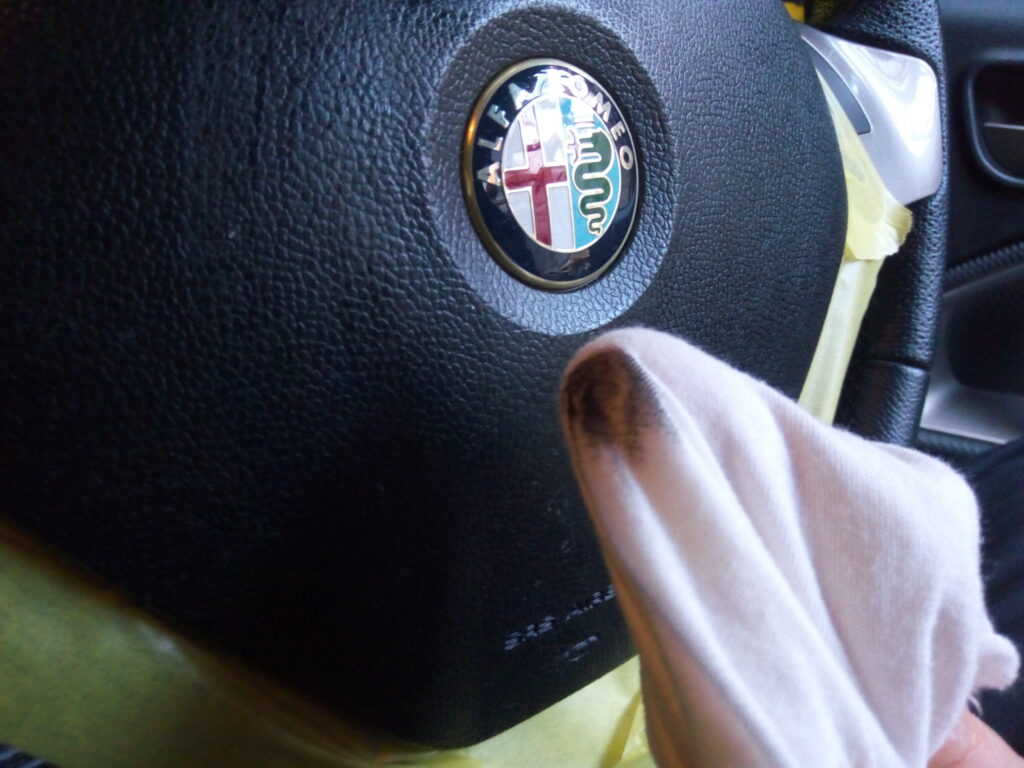
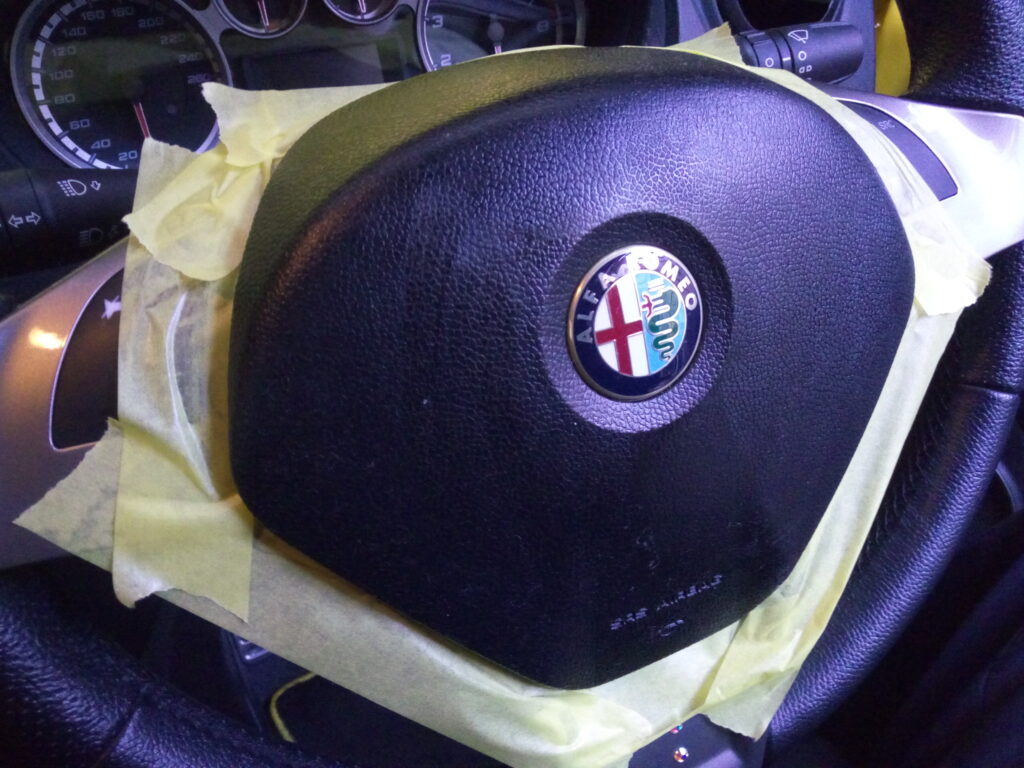
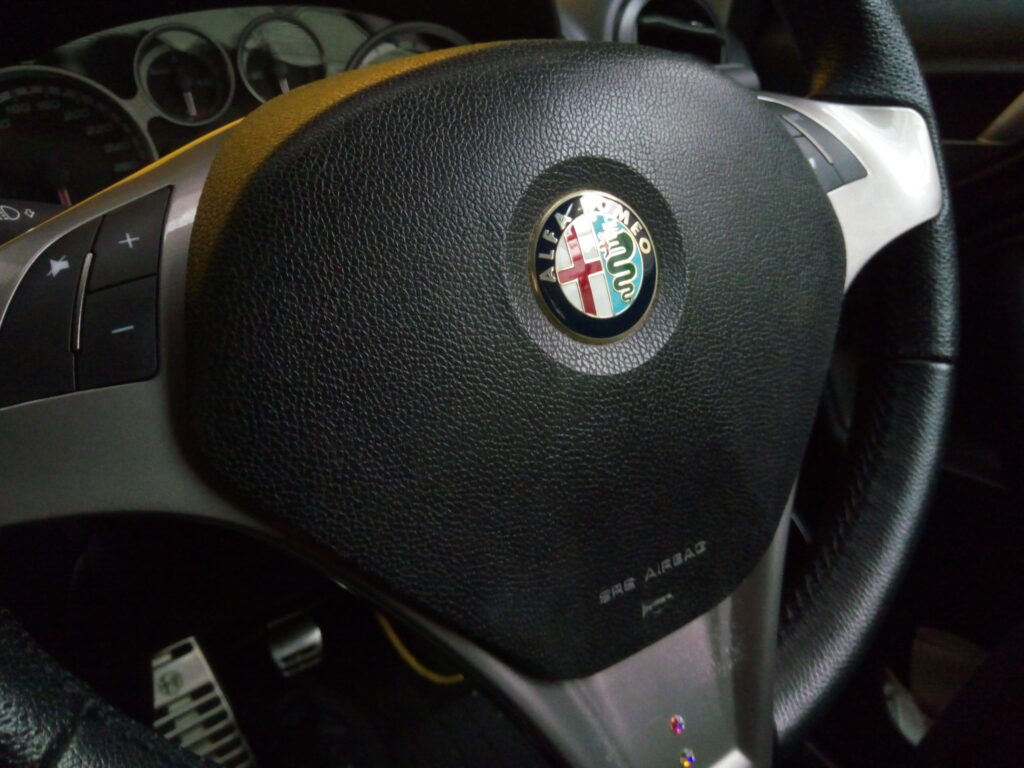
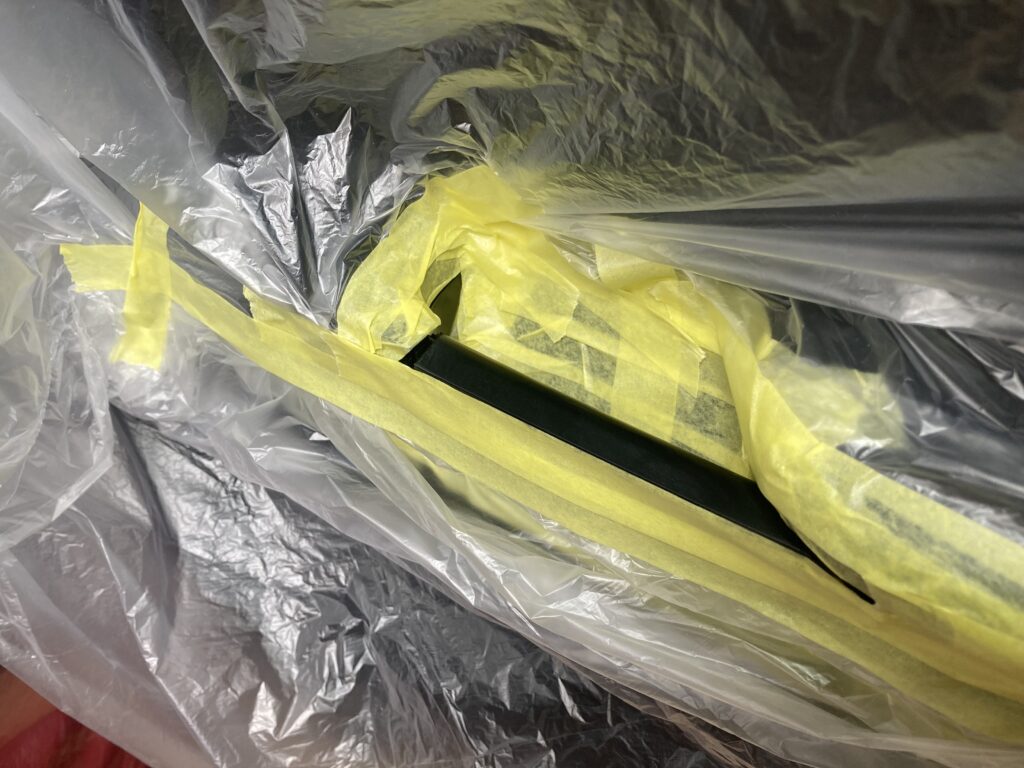
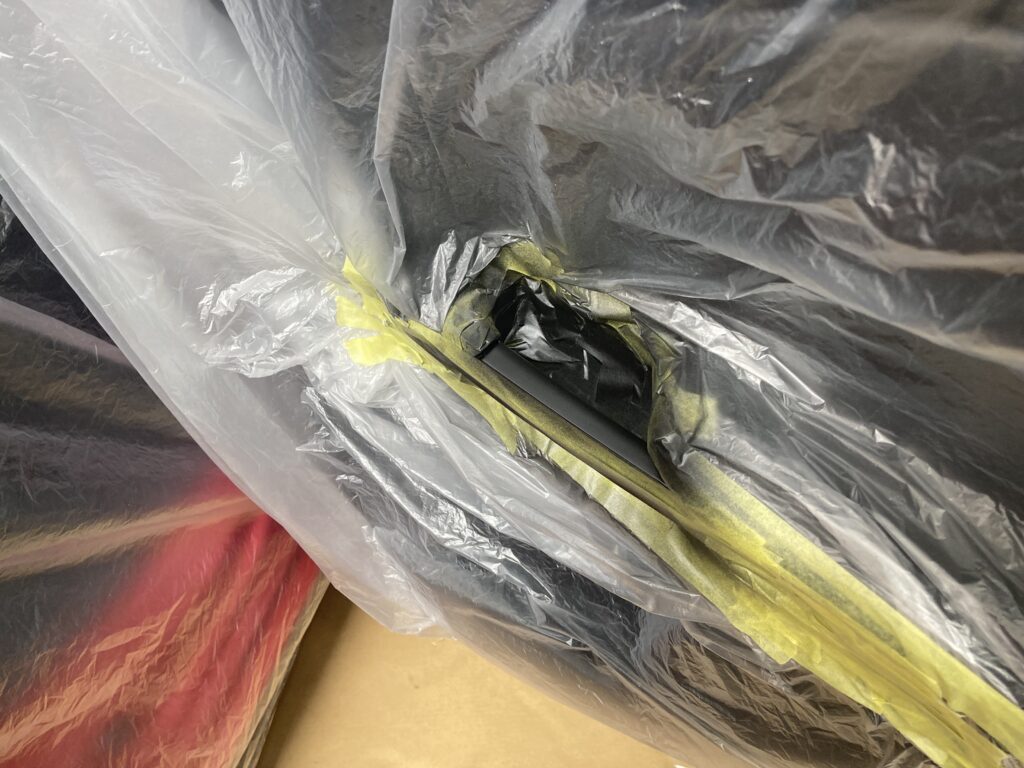
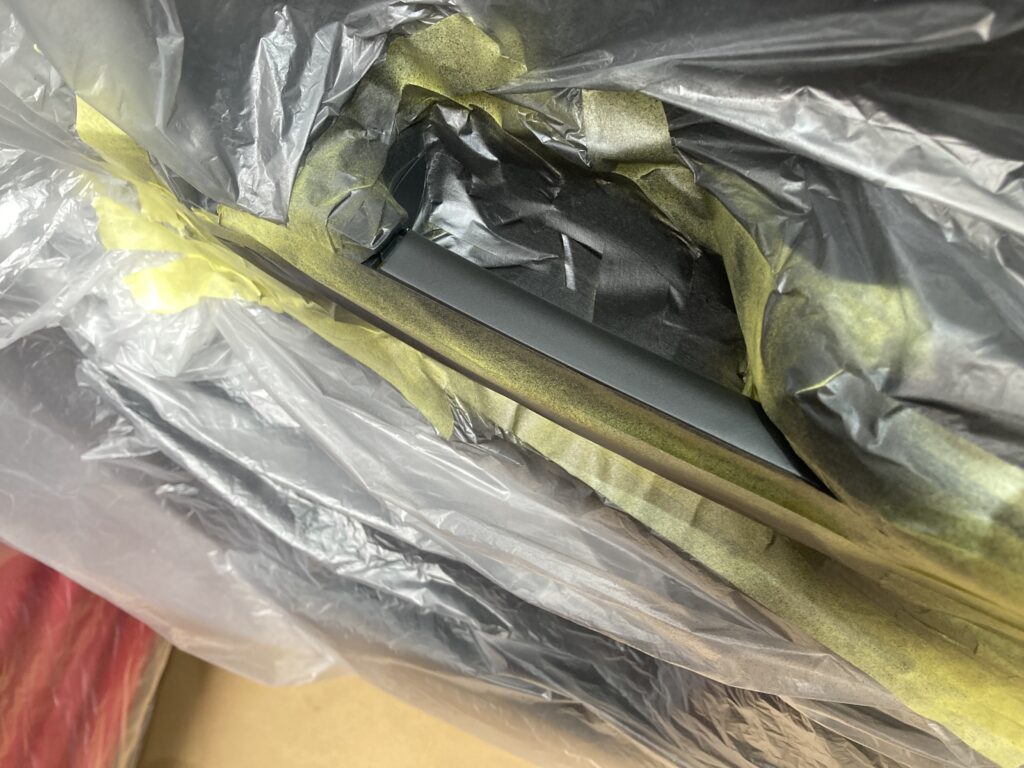
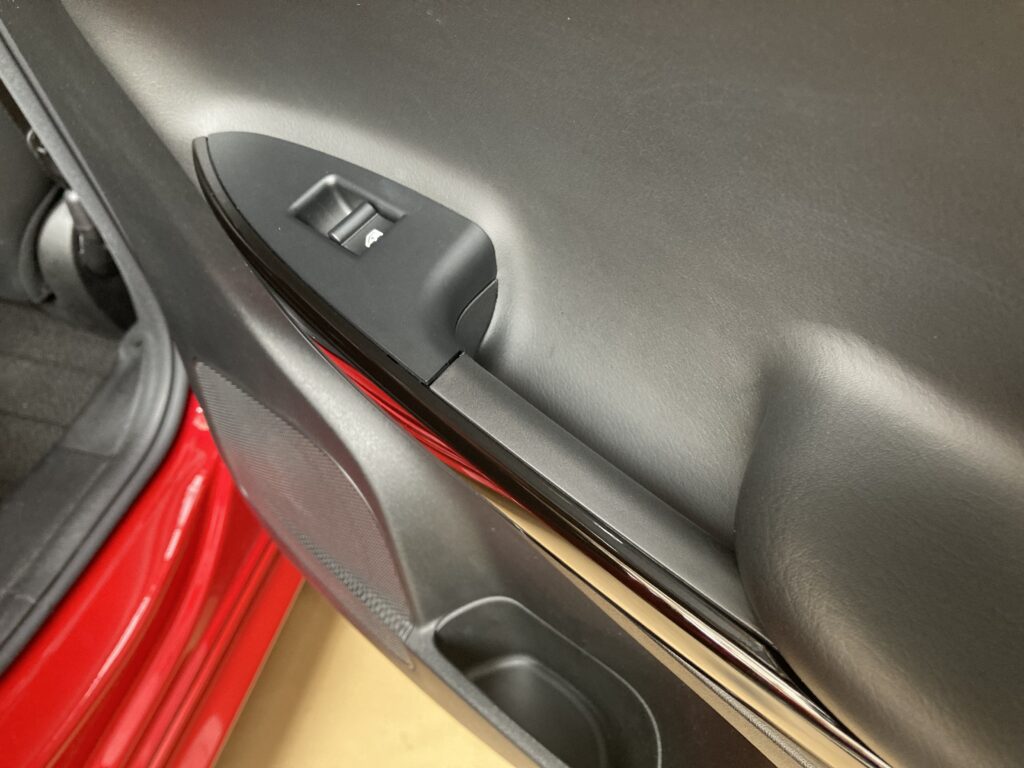
Leave a Reply